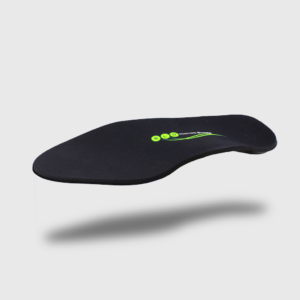Ingrown toenail is a common problem in which the nail grows into the flesh instead of over it. This condition typically occurs with the big toe.

Symptoms
Pain and tenderness of the flesh along one or both sides of the nail
Redness and swelling of flesh around toenail
Infection of the tissue around the toenail
Causes
Unusually curved or excessively wide toenail
Wearing shoes that crowd toenails
Improper trimming of toenails
Injury to toenail
Treatments
Treatment is aimed at removing pressure caused by the toenail. It is not advised to cut the nail back on your own to relieve the pressure. Contact your doctor for appropriate treatment. If you have diabetes, vascular problems, or numbness in the toes, it is important take measures to prevent and promptly treat ingrown toenails due to the risk of serious complications.
For a minor ingrown nail, doctor lifts the nail edge and places cotton or a splint under it to separate from skin an allow it to grow above the skin edge.
For a more severe ingrown toe (infection), doctor trims or removes the ingrown portion of the nail.
For chronic occurrence, doctor may permanently remove a portion of the toenail. This is called a partial matricectomy.
Topical or oral antibiotics if necessary
Warm water soaks, if prescribed
Ingrown Toenail
Pain associated with Ingrown Toenails are a very common problem seen in lower extremity healthcare provider’s office. The first digit, or the “big toe,” is usually involved with the pain occurring as a result of abnormal pressure from the nail borders against the soft tissue of the toe. A nail that is highly curved or one that is excessively wide can create pain related to increased pressures of the nail against the soft tissues around the nails. Ingrown toenails are seen in children and adults alike. Nail trimming techniques do little to relieve the pain associated with this condition. A matricectomy procedure performed in office permanently removes a small portion of the nail that causes the painful ingrown toenail.
Onychomycosis
Onychomycosis or nail fungus affects five to fifteen percent of the United States Population. It is seen in younger as well as older individuals with up to a seventy percent occurrence in people older than seventy years of age. It appears to be more common in people with a history of athlete’s foot (a fungal infection of the skin) and people whose feet perspire a lot. Treatment is challenging because topical medications applied to the nail are unable to reach the infected nail bed. Oral medications including the prescription Terbenafine (Lamasil) continue to be the gold standard of treatment but must be prescribed with adequate patient selection. The effectiveness of this medication for curing the fungal infection is 60-70%. The safety of this medication has been established with over 25 years of medical use. Despite limited safety concerns, most patients are aware of the potential adverse effects on the liver. Laboratory liver function testing routinely performed during therapy support show abnormality in only 3-5% of patients taking the medication. Alternative treatments, including laser is FDA approved but rarely covered under insurance plans which make this treatment cost prohibitive for most patients. Prevention of re-infection after treatment is important because recurrence rates are high. Trying to maintain a dry shoe ware environment by alternating shoes daily is a good way to allow the materials of the shoe to dry. The use of non cotton synthetic socks help to wick or repel perspiration away from the skin.
Ingrown Toenail Discussion Board
Select a View
Click on the view that most represents the area of discomfort that you are experiencing. Drag your cursor over your area of concern to obtain a brief description of the potential condition.
Suggested Product
-

Standard Orthotic
$60.00Our standard orthotic. Relieves pain and provides all day support.Select options







